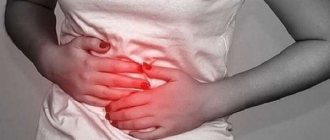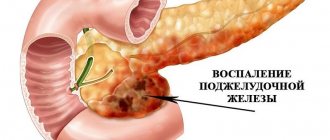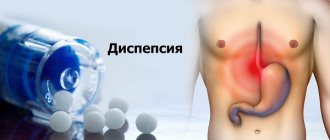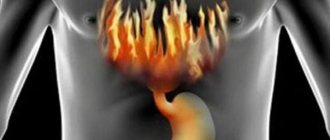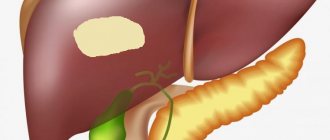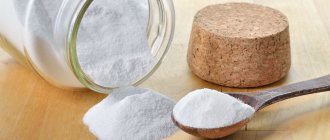Article prepared by:
Vasily Babkinsky
Doctor of the highest category
Pancreatitis is a severe inflammatory process that affects the pancreas. This disease affects all organs of the digestive system. In addition, serious problems may arise with other internal organs and systems. Unfortunately, deaths from pancreatitis have become more frequent in our time, especially if the person suffered from an acute course of the disease.
With pancreatitis, the functioning of the entire digestive system is disrupted
Symptoms of the disease
Death from acute pancreatitis occurs if the disease is advanced; suppuration occurs at the site of inflammation, which breaks through and infects the blood. At this stage, the consequences of the disease are irreversible. According to statistics, death occurs in 40% of cases. Among the symptoms of acute pancreatitis, you need to pay close attention to the following:
- severe girdling pain in the navel area, extending to the hypochondrium, back, and shoulder girdle;
- nausea, severe vomiting that does not bring relief;
- pallor and cyanosis of the skin;
- dry mouth, unpleasant aftertaste.
Many patients are sure that death from pancreatitis is possible only with a strong increase in body temperature, but practice shows that in some cases the temperature, on the contrary, even drops. Severe weakness, dizziness, temperature below 36.5 degrees, this is a reason to immediately consult a doctor.
A white coating appears on the tongue, the patient is constantly thirsty, he is tormented by dry mouth, his lips are also dry and cracked, but after drinking water, vomiting immediately occurs, dehydration occurs, which is also one of the reasons that the person died from acute pancreatitis .
Signs of severe pancreatitis
In acute pancreatitis, the patient may collapse or go into shock, which can lead to death. If the disease is accompanied by the formation of pus, then the patient may experience a high body temperature.
Although in the case of pancreatic edema, the temperature may, on the contrary, drop, it is worth paying special attention to this. Another sign of acute pancreatitis is a change in skin color, this may be:
- cyanosis,
- pallor,
- jaundice.
Causes of death
We can safely say that the cause of death from inflammation of the pancreas is the carelessness of patients. They are forced to die from related problems arising from significant disruption of the functioning of all organs and systems. Some people develop pain shock, while others develop an abscess. Often in older people, the heart simply cannot cope with increasing loads. No one can predict how the disease will behave, but in a hospital setting under the strict supervision of highly qualified doctors, the patient has a much better chance of a quick full recovery and a long life.
We also recommend viewing: Chronic pancreatitis: how to identify and treat the disease
If a patient is in critical condition, the main task of doctors is to stabilize him and remove him from the risk zone. This is achieved in different ways in intensive care conditions. At this time, minutes count, so you can’t hesitate. In order not to waste time, the fight against the main ailment begins there. doctors are doing everything possible to reduce inflammation of the pancreas and relieve the patient of pain. If they succeed, the patient is transferred to the gastroenterology department, where the further struggle for health continues.
To never get into this state, you need to listen to your body. Periodically occurring pain in the navel area should alert you. Even if it goes away over time and does not cause significant inconvenience, it is better to make a preventive visit to a specialist and undergo a full examination of the body. When a disease is detected at an early stage, it is much easier to deal with its manifestations and root causes, and the likelihood of death is minimized.
What can cause acute hemorrhagic pancreatitis?
This pathological process is characterized by necrosis of gland tissue. Usually, with such a diagnosis, the mortality rate is quite high.
Provoking factors will be surgical interventions, various types of injuries, and alcoholism.
There is a sudden increase in pancreas due to hemorrhages. If assistance is not provided in a timely manner, you can die from the disease.
Pancreatitis is considered a disease whose progression can be controlled. If you follow medical instructions, death will not occur.
In addition, it is necessary to monitor the psycho-emotional state, adhere to healthy eating rules, prevent stress and carry out scheduled examinations in a timely manner.
Is it possible to die from chronic pancreatitis?
Chronic pancreatitis is not so acute and noticeable, but it is more difficult to get rid of. A sharp deterioration in the patient's condition is observed if he does not adhere to nutritional rules. For any problems with the gastrointestinal tract, diet is the main tool for successful recovery. Often restrictions on the foods consumed are imposed for life. It is difficult for patients to put up with this; they allow themselves small weaknesses, not even imagining that some of them can lead to a sharp deterioration in their condition, even death.
Pancreatitis is often a consequence of gallstone disease. In this case, you need to get rid of the root cause of the disease. Stones are removed mechanically; doctors often resort to urgent or planned surgery to completely remove the gallbladder. Operations are not performed when the patient is in acute condition.
We also recommend viewing: First steps for pain in the pancreas
Sometimes chronic inflammation of the pancreas develops into cancer of this organ. The relationship between these two diseases has not been proven by science, but world-famous oncologists note that malignant neoplasms more often occur in patients who previously often suffered from inflammatory processes. If oncology is detected at stages 3-4, then the destructive processes in the body are already irreversible, death is a natural result of the disease. The work of doctors during this period is aimed at prolonging the patient’s life, palliative treatment is carried out.
Patients have the power to prevent a severe course of the disease; they only need to monitor their current state of health, do not forget about regular preventive examinations and timely visits to the doctor.
What types of diseases are there?
There are 2 types of pathological process:
- Acute pancreatitis. Forms quickly. As the disease manifests itself, the pancreas’s own enzymes kill the gland. If treatment is not timely in the first days of symptoms, the risk of death is extremely high. According to statistics, out of 10 patients with acute pancreatitis, 2 do not survive. In this regard, if there are initial signs of pathology, you should not delay visiting a specialist and carry out independent treatment. In the acute course of the pathology, irreversible changes occur in the pancreas, which lead to death.
- Chronic pancreatitis. Develops over a long period of time. Exacerbations may be followed by remissions, and there are no obvious symptoms of the disease. Patients over 40 years of age are most often exposed to this type of pathology. The chronic form often manifests itself due to an inappropriate attitude towards the patient’s own health - with initial improvements in well-being, the therapeutic course must be interrupted and resumed only in case of exacerbation.
The question often arises whether people die from this disease. Often, death occurs directly from an exacerbation, since the sudden formation of the disease is difficult to predict.
People regardless of gender are susceptible to this outcome. The pathological process develops extremely quickly.
In this regard, mortality from the disease is observed during the first 7 days from the onset of initial symptoms.
Other manifestations of the disease
There are several indirect symptoms of this pathology. These include the following:
- Yellow coloration of the skin. This symptom is due to the fact that the volume of the pancreas increases during inflammation. The organ compresses the liver ducts. In addition, the symptom may appear as a result of the formation of stones in the gallbladder and the simultaneous development of pancreatitis.
- A bluish tint to the skin. The sign is typical for patients with diseases of the heart muscle. It is accompanied by respiratory disorders. At the same time, the face, arms, and legs are painted blue. If such a shade is observed in the area of the upper peritoneum and left hypochondrium, it can be argued that the patient is in serious condition.
- Paleness of the skin. It indicates the development of a state of shock, intoxication, bleeding and ulcers in the digestive organs.
- Formation of swelling in the upper part of the peritoneum, bloating.
- Blood pressure fluctuations. At the beginning of the attack it is slightly elevated, and then decreases greatly. As the symptoms of chronic pathology develop, an acceleration of the heart rate, a decrease in body weight, a feeling of weakness and loss of appetite are observed.
Causes of high mortality
Pancreatic juice, intended for digesting food, produced by the pancreas, has an aggressive composition. Due to a malfunction of the gland, highly concentrated juice is concentrated in its ducts. This is how pancretosis develops, a life-threatening disease in which self-digestion (destruction) of the gland occurs. The following pathological changes lead to death:
- necrosis leading to complete tissue alteration;
- the formation of large foci of putrefactive exudate.
The reasons contributing to the rapid development of severe forms of pancreatitis are:
- unhealthy lifestyle with addiction to bad habits - alcohol, smoking;
- unhealthy diet with a violation of the quantity and quality of food consumed;
- cholelithiasis;
- prolonged stress, etc.
When two or more of the above reasons are combined, the likelihood of fatal consequences increases many times over. If you consult a doctor in a timely manner, the patient has a chance to improve his condition.
Necrosis leads to death.
The reasons contributing to the rapid development of severe forms of pancreatitis are considered to be an unhealthy lifestyle with addiction to bad habits - alcohol, smoking.
Prolonged stress can contribute to the development of severe forms of pancreatitis.
In acute form
Acute pancreatitis always occurs unexpectedly and progresses rapidly.
Without emergency medical care, the patient dies in a matter of days. The pancreas is processed under the influence of its own juice, which leads to bleeding, necrosis, and purulent peritonitis. Irreversible consequences also affect other internal organs: toxic damage to the liver and kidneys occurs, breathing problems develop, and a coma forms. The consequences of advanced acute pancreatitis are irreversible and lead to a sad outcome.
The following manifestations of the disease cannot be ignored:
- the occurrence of frequent vomiting that does not bring relief;
- decrease in body temperature;
- constant thirst;
- attacks of excruciating pain in the umbilical region, radiating to the shoulder, back, hypochondrium.
The occurrence of frequent vomiting that does not bring relief should not be ignored.
Constant thirst is a manifestation of illness.
Attacks of excruciating pain in the umbilical region, radiating to the shoulder, back, and hypochondrium should not be ignored.
In the chronic stage
Pancreatic disease in the chronic stage is incurable. A feature of its course is the alternation of exacerbation and periods of calm. Compliance with medical orders and careful attention to the patient’s health will help stabilize his condition. An unhealthy lifestyle can provoke an acute attack of pancreatitis, leading to dire consequences. A common cause of relapse is the patient's alcohol addiction.
Getting injured
Rapid death during the rapid development of acute pancreatitis can be a consequence of severe trauma to the pancreas as a result of:
- a powerful blow to the upper abdomen;
- gunshot or knife penetrating wound to the specified area.
The listed types of injuries lead to rapid necrosis or pancreatosis of organ tissue. The absence of urgent qualified medical care will lead to the death of the victim.
Diet for the purulent stage of pancreatitis
This form of inflammation, like the mild stage of pancreatitis, requires, first of all, a strict diet, that is, a balanced diet and avoidance of alcoholic beverages.
Meals should be low-calorie, but frequent - about 5-6 times a day. Also, during the acute stage of pancreatic inflammation, doctors force the patient to completely stop eating for a short period of time. This will not only speed up the treatment of the patient, but will also prevent further complications.
Water consumption also plays an important part in the patient’s diet. The patient should drink his daily water intake - from 1.5 to 2 liters. The water should be mineral and still. As for teas, you are allowed to drink green tea or various herbal infusions (rose hips, chamomile). You should give up coffee for a long time.
The diet of a patient with pancreatitis should include non-acidic vegetables, which can be taken raw or boiled. It is also allowed to make non-acidic juices from them.
Also, to maintain your health, you should avoid flour products, foods high in sugar, fatty foods, and very hot or very cold foods.
Purulent pancreatitis of the pancreas after surgery
Prescription of drug therapy is often carried out during the consultation. A number of specialists take part in the discussion - a gastroenterologist, a surgeon, an endoscopist and other doctors. Surgical intervention is used for diffuse inflammatory process of a parenchymal organ. Surgery consists of draining purulent cavities. If necessary, necrotic areas of the gland are removed with drainage of the peritoneum.
In order to prevent purulent pancreatitis from appearing, a number of preventive measures are taken after the operation, the main component of which is considered to be antibacterial treatment. An equally important stage of therapy is fasting and subsequent adherence to a special diet. The diet must be low-calorie, and food is consumed in small portions, but often (5-8 times a day).
In order for recovery to occur more quickly, the patient must drink a sufficient amount of non-carbonated mineral water - 2 liters per day. It is allowed to drink green tea, infusions of rose hips, and chamomile. Certain experts advise their patients to drink a special pancreatic drink. Alcoholic drinks and coffee are prohibited. Purulent pancreatitis is considered a serious disease, which is accompanied by a number of life-threatening complications.
For this reason, even intensive therapy does not carry favorable prognoses. Because of this, after the operation the patient undergoes a long recovery and periodically consults with a gastroenterologist. A number of other important recommendations can prevent the formation of purulent pancreatitis:
- Completely give up cigarettes and alcoholic drinks.
- Balanced diet.
- Limit the use of potent drugs in high dosages.
Compliance with preventive measures will help prevent the occurrence of purulent processes in the gland. Thus, you should more carefully monitor your own well-being and promptly treat diseases of the liver, digestive organs and gall bladder.
Diagnostic methods
Detection of the development of an abscess is possible after a number of diagnostic procedures. The first step is to take blood tests for a general clinical and detailed examination, as well as a urine test and an x-ray procedure for all organs located in the peritoneal cavity.
In some cases, additional research methods may be needed to confirm the diagnosis. In such cases, the patient is sent for an ultrasound, after which the doctor can accurately determine the location of the purulent lesion or the localization of cystic formations.
Among other things, a laparoscopic examination method can be used, which makes it possible to identify the stage of development, type and severity of pathology without using surgical intervention.
There are cases when diagnosing an abscess becomes very difficult due to the patient’s late seeking medical help. At the initial stages of pathology development, its full diagnosis can be carried out in normal hospital conditions.
In severe cases, diagnosis of purulent pancreatitis is carried out in the gastroenterological or intensive care unit, which will save the patient from death.
Alcoholic pancreatitis
Alcoholic pancreatitis develops due to alcohol abuse. The type and cost of alcohol does not affect the course of the disease. You can get sick from both beer and expensive cognac if you drink regularly.
In chronic pancreatitis, mortality has been recorded for twenty years. During this period, half of the population suffering from pancreatic disease dies. Moreover, people of mature and young age have to die. The causes of death are not the disease, but the diseases that appear due to alcohol abuse.
The effect of alcohol on the pancreas
As a result of alcohol entering the body, pancreatic cells are deformed. The cause is substances formed during the breakdown of ethyl alcohol or surrogates.
Pathogenesis
Cell deformation occurs through the activation of enzymes produced directly by the gland. Then the enzymes act on the organ itself. The result is necrosis, the death of large areas. The gland becomes inflamed and increases to pathological sizes. The pancreatic tissue is deformed and replaced by fat cells, destroying the endocrine system. Diabetes develops due to pathology.
Alcohol, which is abused by diagnosed patients, has an extremely negative effect on cells. Tobacco, which often accompanies alcohol, causes vascular spasms, which increases tissue damage. Foods filled with fats activate secretory activity, causing a harmful effect on the gland.
The functions associated with the functioning of the pancreas are interconnected. It is impossible to say that the patient died from pancreatitis without finding out the true cause of death.
Classification of pancreatitis caused by alcoholism
The pathology is divided into two stages - acute and chronic. As a result of one-time consumption of alcohol in large doses, intoxication of the body occurs. This happens in the acute form of the disease. Signs of the acute form of the disease are similar to those of a conventional diagnosis.
The causes of chronic pancreatitis are mostly due to alcohol abuse. Symptoms of this type of disease may not appear for a long time. If you drink alcohol in small doses but regularly, the disease progresses daily. With chronic pancreatitis, patients live without realizing the presence of the disease for many years.
How dangerous is alcoholic pancreatitis?
During attacks of pain, many patients complain of acute pain in the upper abdomen, arising in the back and hypochondrium. Painful sensations intensify in the “lying on your back” position.
Due to impaired absorption of nutrients into the body, patients experience a sharp weight loss. To avoid death, you need to consult a gastroenterologist.
What are the complications of the disease?
Complications that arise lead to the formation of cysts and abscesses. With pancreatitis, if the disease is not treated, adenocarcinoma, pancreatic cancer, develops. The result of the pathology is often fatal.
Is it possible to cure pancreatitis caused by alcohol?
Treatment of the disease occurs under the strict supervision of a number of doctors. Professionals in the field of gastroenterology, endocrinology, and surgery are considered competent. In severe cases, ask for help from a radiologist or psychotherapist.
The main condition for effective treatment is the exclusion of alcoholic beverages from the diet. You cannot drink beer or other low-alcohol drinks.
What does the forecast depend on?
Life expectancy is determined by the following factors:
- Age category.
- Degree of tissue damage.
- Frequency of use of products containing ethyl alcohol. If a person has an alcohol addiction, the answer to the question of whether it is possible to die from pancreatitis will be more likely to be affirmative than negative.
- Type of pathology.
- Complications.
- Compliance with doctor's orders.
The question of whether you can die from pancreatitis is largely determined by a combination of these factors.
Treatment prices
Prices for the treatment of purulent pancreatitis vary. Everything starts from seeing a doctor and ending with operations, if necessary. Therefore, no one can say with certainty the final cost of treatment. In addition, prices in different regions for the same procedures may vary.
Example of prices for treatment in Moscow:
- Ultrasound of the pancreas – 900-1000 rubles;
- Esophagogastroduodenoscopy – 4500 rubles;
- X-ray of the peritoneum – 1900 rubles;
- Blood glucose – 220 rubles;
- Laparoscopic cholecystectomy – 55,000 rubles;
- MRI – 6000 rubles;
- Diagnostic laparoscopy – 35,000 rubles;
All prices are approximate and may vary significantly depending on the clinic and doctors.
